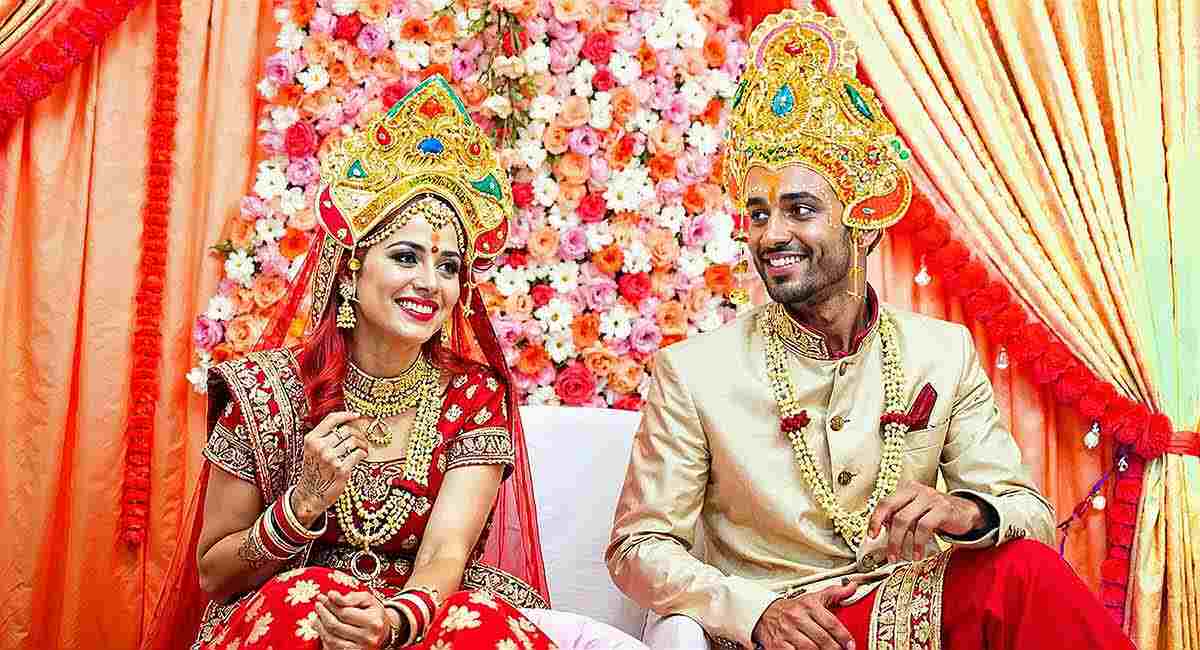Traditional Outfits for Odia Grooms
Odisha, a state with a rich history of culture in eastern India, is known for its vibrant festivals, classical dance forms like Odissi, majestic temples, and colorful wedding traditions. Odia weddings are grand affairs steeped in rituals that blend heritage with celebration. For an Odia groom, the wedding outfit is more than just attire—it symbolizes tradition, family pride, and personal elegance. Whether you’re an Odia groom or planning a traditional wedding in Odisha, selecting the right outfit is essential to preparing for your big day.
This guide examines the best traditional outfits for Odia grooms, with cultural insights and styling tips to help you look your best while honoring tradition.
Dhoti-Kurta
The Dhoti-Kurta is an Odia groom’s most traditional and culturally significant attire. It reflects timeless elegance and symbolizes purity and pride, especially in Brahmin and other conservative Odia families.
The groom typically wears a cream or white dhoti made of silk or fine cotton, often with red or golden borders. The groom pairs it with a matching kurta or panjabi, which can be plain or embroidered depending on the occasion.
Styling Tips:
- Choose a pure silk dhoti for a rich and regal feel.
- Complement it with a contrasting silk uttariya (scarf or stole) draped elegantly over one shoulder.
- Wear traditional footwear like leather mojris or kolhapuris for an authentic look.
- Add a chandan tilak on the forehead for a sacred touch.
This classic ensemble is perfect for sacred rituals and wedding ceremonies where traditional attire is necessary.
Kurta-Pyjama with Silk Angavastram
If you’re looking for comfort without compromising on tradition, the kurta-pyjama paired with a silk angavastram offers a relaxed yet elegant option. Odia Grooms commonly wear this outfit during pre-wedding events like Mangala Snana and Jairagha or their arrival in the baraat procession.
Styling Tips:
- Choose earthy tones like cream, beige, or light gold for a traditional yet refined appearance.
- Match your angavastram with the bride’s outfit for a coordinated look.
- Add subtle Odissi embroidery on the kurta’s collar and cuffs for an ethnic flair.
This look offers the perfect balance of ease and sophistication, especially for rituals where you’ll move around a lot.
Sherwani
Although the sherwani may not be native to Odisha, they have found a stronghold in modern Odia weddings. It’s ideal for grooms who want a grand, Indo-Mughal-inspired appearance on their wedding day, especially during the bahaghara (main wedding ceremony) or reception.
Sherwanis in hues like maroon, ivory, royal blue, or gold are now commonly chosen, often paired with churidars or straight-cut trousers.
Styling Tips:
- Opt for luxurious fabrics such as brocade, raw silk, or velvet.
- Add a safa or pagdi (turban) with a feather or a jeweled brooch for a princely look.
- Complete the look with a kantha (traditional necklace) and embroidered juttis.
This outfit merges modern fashion with classic grandeur, making it a favorite for formal ceremonies.
Odia Grooms: Pata Silk Ensemble
Pata silk is a textile treasure from Odisha. It is often adorned with motifs like the Konark chakra, temple borders, and lotus patterns. Wearing a Pata silk outfit is not just a style statement—it’s a tribute to Odia’s heritage and craftsmanship.
Odia Grooms can opt for custom-made kurtas, angrakhas, or bandhgala jackets crafted from this luxurious fabric.
Styling Tips:
- Pair it with a solid-colored dhoti or churidar that complements the silk’s vibrant design.
- Keep accessories minimal and let the silk take center stage.
- Perfect for receptions, engagement ceremonies, or post-wedding pujas.
Wearing Pata silk reflects pride in local traditions and support for indigenous artisans.
Bandhgala with Traditional Dhoti
If you want a more tailored and modern aesthetic while respecting tradition, pair a bandh gala (Nehru jacket) with a silk dhoti. This Indo-Western combination strikes a perfect balance between modern elegance and cultural roots.
Styling Tips:
- Choose pastels or neutral tones for daytime events, and go bold with deeper colors for evening receptions.
- Add a brooch or pocket square with Odia art or embroidery elements for a unique flair.
- Wear leather sandals or juttis with ethnic patterns to maintain the traditional tone.
This look is especially popular among younger grooms who prefer minimalism with a cultural touch.
Accessorizing the Odia Grooms
No groom’s look is complete without the right accessories. Thoughtful, symbolic adornments elevate Odia wedding attire:
- Mukut or Sehra: A crown-like headpiece or floral veil worn during the baraat to signify royalty.
- Kandhei Mala: A garland of tulsi or sandalwood beads, often worn during religious rituals.
- Kamarbandh: A decorative waistband that also helps hold the dhoti in place.
- Chandan Tilak: A tilak made of sandalwood paste that is put on the forehead and symbolizes good fortune.
- Gold Chains and Rings: Often gifted by elders, these ornaments symbolize prosperity and legacy.
These accessories complete the groom’s look and hold spiritual and cultural meaning.
Outfits for Various Wedding Rituals
Odia weddings are multi-day affairs with distinct rituals, each with its appropriate attire:
- Mangala Snana: Simple white cotton dhoti, bare upper body, or plain kurta.
- Jairagha & Baraat: Light sherwani or dhoti-kurta with an angavastram.
- Bahaghara (Wedding Ceremony): Dhoti-kurta is for traditionalists, and a grand sherwani is for a more modern approach.
- Reception: Embroidered kurta-churidar or designer sherwani.
- Post-Wedding Rituals (Gruhaprabesha, Astamangala): Subtle and elegant silk dhoti or kurta-pyjama.
Wearing appropriate attire for each ritual helps uphold the cultural essence of the celebration.
Final Thoughts
Choosing the perfect traditional outfit for an Odia groom is more than just looking good—it’s about honoring your heritage and embracing your roots. Whether you opt for the classic dhoti-kurta, the rich elegance of Pata silk, or the regal appeal of a sherwani, let your outfit reflect your personal style and cultural pride.
Weddings are celebrations of love, family, and identity. So wear what resonates with your heart—and wear it with confidence.


